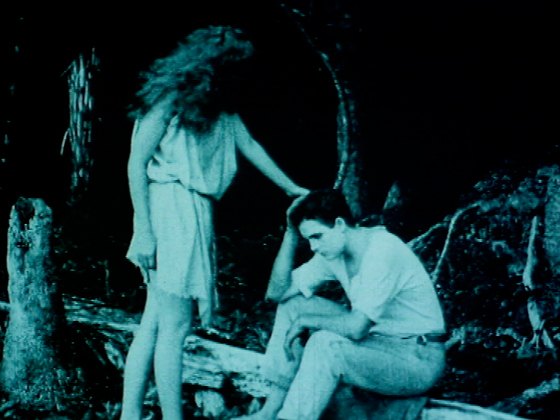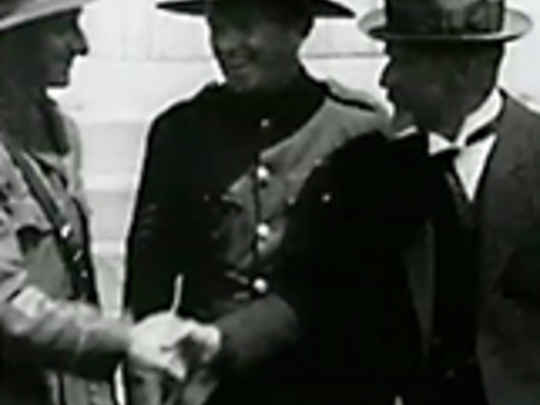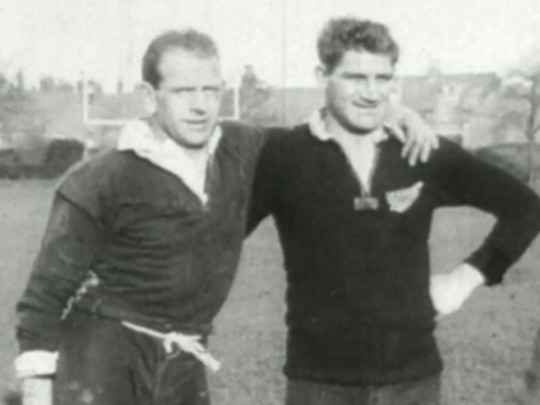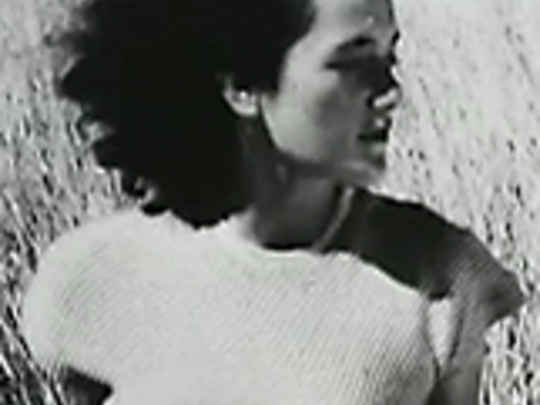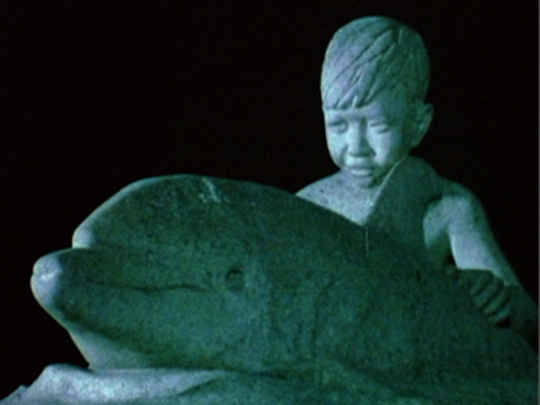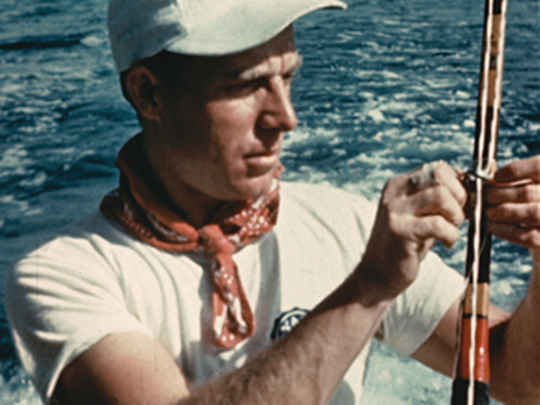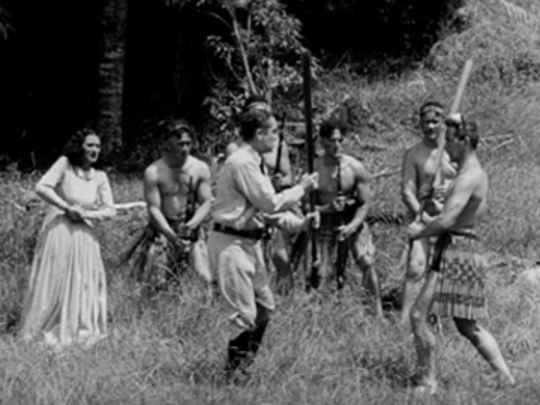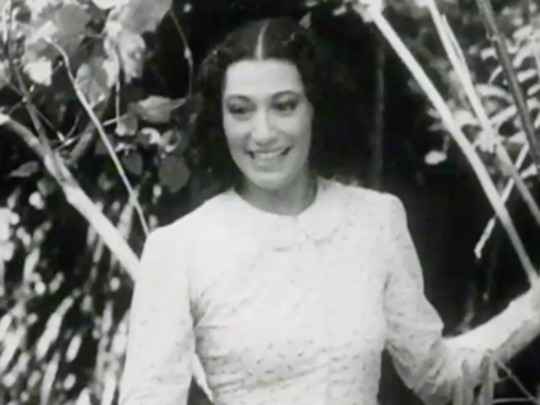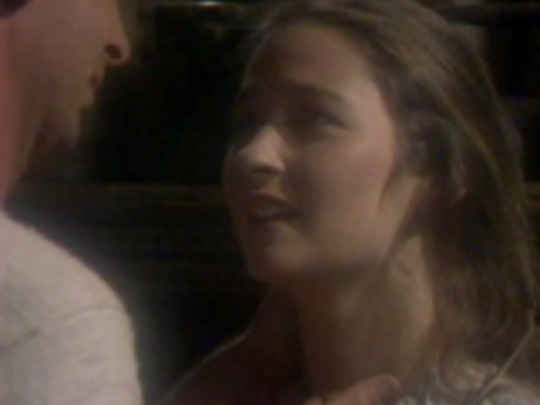Today his dreaming soul revelled in new sensations, a world of make-believe adventures seemed now almost realised.
– The clerk (Robert Ramsay) seeks romance and adventure while sailing
Oh for the Bay on a breezy day, and the gals a callin' O! We'll see 'em today, All pretty and gay, In the Bay of Plenty O!
– Sailor Bill breaks out the accordian for a sea shanty
I'm sorry miss to have intruded.
– The clerk (Robert Ramsay) meets the mysterious 'Cave Lady' ( Hazel de Montalk)
Isn't nature wonderful, Dick?
– The clerk (Robert Ramsay) shares his joy with his friend Dick as his 'cave lady' (Hazel de Montalk) travels back home
A dramatic and extremely romantic tale of a white maiden brought up by the Māoris, it was filmed on Mayor Island in authentic settings. A New Zealander named Gordon Campbell who played the male lead later went to Hollywood where he reached the final three in the search for the first version of Ben Hur.
– Description of mysterious lead actor Gordon Campbell (aka Robert Ramsay), in entertainment weekly Playdate, July 1961, page 46
The photography was magnificent but the story was fairly crude...it was notable for its scenery and its action. What money we made in New Zealand we lost trying to get it released overseas.
– Director Rudall Hayward on My Lady of the Cave, as quoted by Lindsay Shelton on a Te Ara profile of Hayward
best local effort to date...it sets a standard in photography, technique, lighting and production generally which places it on equal terms with the imported films ...the story is refreshingly wholesome, the scenic games are a delight to view, and the New Zealand atmosphere is faithfully retained.
– A reviewer in The NZ Herald, 25 February 1922, page 11
For one scene a small Māori canoe was wanted but though I advertised widely for one in Tauranga there was nothing doing. Plenty of big canoes, but not little ones. I was sitting despondently on the deck of the scow on which we were to sail from Tauranga next morning when up came a member of my cast, Mohi, one of the biggest Māoris I have ever seen. For a fiver he would get me just the sort of canoe I wanted. I gave him the money and he disappeared. Next morning he returned, paddling a beautiful little canoe and overjoyed we set sail for Mayor Island. Coming back a month later as we neared the wharf we noticed there was a larger crowd than usual waiting for us and that they were mostly Māoris. We waved to them but they were strangely silent and we soon learned why. The Māoris were from up the river and it seemed that Mohi had borrowed their tribal canoe and now they were looking for 'utu'. I gathered that it was a far more serious crime to steal a canoe than to steal a man's wife. After all, wives are plentiful. To make matters worse, Mohi did not even belong to their tribe. Well it cost us quite a lot to settle the matter. I forget whether the payment was made in cases or barrels but at any rate we did our best to 'liquidise' the debt.
– Director Rudall Hayward recalls a hairy moment when filming My Lady of the Cave, The Listener, 8 November 1940
The costumes worn by Miss. Hazel West in the title-role were designed by John Court's of Auckland N.Z.
– Opening credits
[The Mill Clerk] constructs the perfect wife for a successful pioneer — the essence of purity, willingly subject to every desire of 'Her Man Who Found Her', and completely untouched by hand or mind so that she has to be taught how to be...
– Writer Sam Edwards on the film's main characters, in 1997 book New Zealand Film 1912 - 1996, page 30
[Cameraman] Frank Stewart spent a lot of time on the tinting and toning because we were fascinated by the use of colour in those days...
– Director Rudall Hayward, in a 1962 interview with Ray Hayes and Walter Harris
Rattling Tale of Adventure on the New Zealand coast, with a Love Story that Steals into your Heart, like some Weird and Beautiful Melody.
– Tagline on the poster for My Lady of the Cave
[The scenario] was derived from a newspaper serial, that was written by HT Gibson, and published in weekly instalments in the New Zealand Herald between September 1921 and February 1922. This was an appropriate formula: the episodic fast pace (with plenty of regular action scenes) adapted well to cinema and the story was already well known to, and popular with, the public...
– Writer Diane Pivac on the inspiration for the film, in 2011 book New Zealand Film - An Illustrated History, page 65
A schoolmaster in Waihī, Gibson was a family friend of Hayward's and became a shareholder in the syndicate that was established to finance the project. The syndicate was made up of 20 partners, who made equal contributions to the budget of 1000 pounds (which for a local production was substantial).
– Writer Diane Pivac on HT Gibson, whose serialised story inspired the film, in 2011 book New Zealand Film - An Illustrated History, page 65
